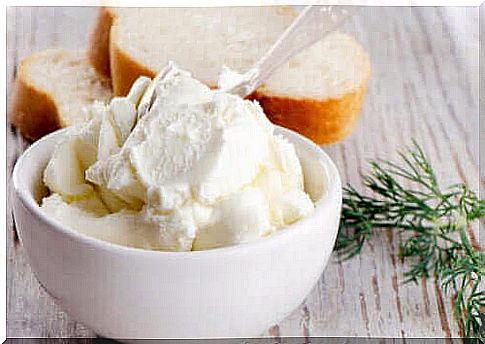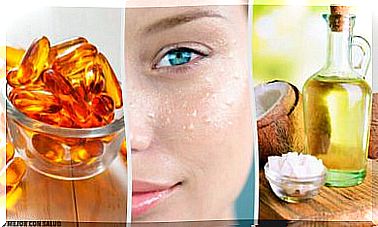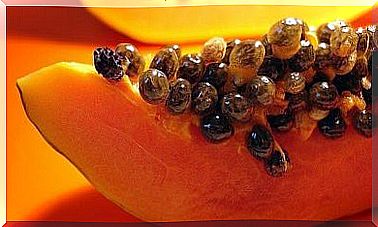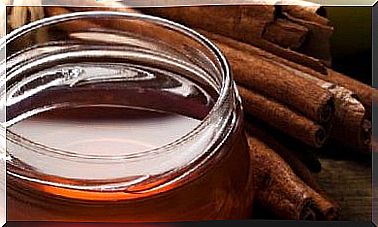Is Industrially Produced Cream Cheese Actually Beneficial For Your Diet?
Cream cheese is not only delicious, but also versatile. You can use it for both sweet and savory dishes. But is cream cheese actually beneficial in your diet? In today’s article you will find out the answer to that question!

According to the Codex Alimentarius , cream cheese is a soft, spreadable, unripened and rindless cheese.
The texture is spreadable and smooth to slightly flaky, it has no holes, and the cheese is easy to mix with other foods and spread over them. However, due to its high fat content, cream cheese is absent from most healthy eating plans.
But is cream cheese healthy for you from a nutritional point of view?
In fact, the fat in milk can have some little-known benefits that we’ll talk about later. In addition, cream cheese and its preparations (such as whipped, flavored and other varieties) are used to give a unique taste to many sweet and savory preparations.
Many people eat this food for its taste, versatility, and texture. But do you actually know what each serving of cream cheese contains? Do you know how it is made? Just read on for answers to these questions and more!
How is cream cheese made?
As published in the Journal of Dairy Science , the raw material for making this food is plain cream or a mixture of cream and milk. The cream is pasteurized and converted into very small fat droplets. Then lactic acid bacteria are added. The manufacturers then ferment the cheese and make it more acidic.
After that, they add salt and certain additives like gelatin, starch and other thickeners and emulsifiers approved by the Codex Alimentarius . Finally, they add a coagulant. According to Foods magazine , this is an enzyme of plant or animal origin that breaks down milk protein in order to curdle it.
Once it is set, manufacturers mix everything before cold or hot packaging the finished product. According to the Codex Alimentarius, it contains 25 grams of milk fat per 100 grams of dry matter and 67% water. Other fat values vary depending on the preparation.
What is the nutritional value of cream cheese?
According to the FoodData Central of the United States Department of Agriculture and according to the PAHO / WHO, 100 grams of cream cheese contains the following macro and micronutrients:
- Water: 54%
- Fat: 32%
- Saturated fats: 21.4%
- Protein: 7.1%
- Carbohydrates: 7.14%
- Calories: 321 calories
- Vitamin A: 300 micrograms retinol
- Riboflavin: 0.20 milligrams
- Calcium: 71 milligrams
- Phosphorus: 104 milligrams
This dairy product is high in fat, 67% of which is saturated fat. In addition, it contains less protein, calcium and phosphorus compared to other cheeses. But cream cheese is rich in vitamin A.
Light cream cheese contains 67% water, 7.8% protein, 8% carbohydrates and 15% fat. At 160 micrograms, the vitamin A content is lower than in the conventional variant.
It also contains 9% saturated fat and 148 milligrams of calcium. Furthermore, this cheese has 40% fewer calories than conventional cheese.

Fatty acids
A good part of the fatty acids in cream are very small, which promotes their absorption in the intestines. Professor Gaspar Ros comments that they can be used as quick sources of energy.
One of them is butyric acid, which according to the journal Hospital Nutrition, benefits colon cells and improves colon health.
Types of protein
Cream contains casein and whey protein. A group of experts agreed that these are of high biological value as they contain many essential amino acids such as lysine.
Still, their protein content is insufficient to be recommended in high-protein diets.
The carbohydrates found in cream cheese
The lactic acid bacteria added during production break down most of the carbohydrates in this product. According to the journal Agricultural Matters , these microorganisms convert lactose into lactic acid, which prevents the growth of disease-causing bacteria in the intestines.
Vitamins
The main vitamin in cream cheese is vitamin A. It is very important for vision development, bone growth and the immune system.
One serving contains 84 micrograms of retinol, which is around 10% of the recommended daily dose, according to ALAN magazine .
Minerals
As with other cheeses, calcium and phosphorus are the most abundant minerals in cream cheese. However, they are only available in smaller amounts because it contains less protein. A serving of 30 grams per day barely covers 2% of the recommended daily amount of calcium.
The calorie content of cream cheese
Traditional cream cheese is high in calories. If you spread 28 grams on a slice of bread or a cracker, you are consuming around 90 calories.
Therefore, you should be careful when consuming this cheese so that you do not consume too many calories.
Uses of cream cheese
The texture and taste of cream cheese are the greatest culinary strengths of this delicious dairy product. You can also use it to prepare both sweet and savory dishes.
The most common use is to spread cream cheese on top of crackers, toast, and muffins. It is also very often used as an ingredient in fillings, for baked potatoes or in sandwiches.
But you can also make delicious creamy dressings with cream cheese and serve them with pasta, fish, chicken or vegetables. If you refine this cheese with spices, you will experience a real culinary delight.
You can also use cream cheese for baking, because it is perfect for fillings and toppings, for example for carrot cakes. In ice cream, cream cheese serves as the base, which is then combined with various fruits. Brownies and cheesecakes also taste great when prepared with this product.
As Brighenti and other researchers point out, its properties make cream cheese an ideal product for enhancing texture. Adding two tablespoons to puff pastry or focaccia will make them softer and richer.
Using cream cheese allows you to be creative and experimental in the kitchen. How about a fruit or vegetable smoothie, for example, which can be made even creamier with a little cream cheese? Your imagination knows no boundaries!
The benefits of cream cheese
In addition to the nutrients that cream cheese provides you with, this product offers a few other advantages, which we will show below.
Cream cheese could potentially be a probiotic
According to the World Gastroenterology Organization (WGO), probiotics are microorganisms that can improve gut health and immune function.
According to the Journal of Biological and Health Sciences , this cheese is fermented with a specific lactobacillus that could have a probiotic function and is considered safe. Some work shows the results of using Lactobacillus casei as a probiotic in this product to optimize quality.
Cream cheese is low in lactose
Many people cannot tolerate the lactose contained in milk because they lack the enzyme that breaks it down in the intestines. As a result, bloating, excessive gas formation, and diarrhea occur. Nonetheless, the journal Nutrients makes it clear that some lactose intolerant people can tolerate a maximum of 12 grams of lactose per day.
A serving of cream cheese (about 30 grams) contains up to two grams of lactose. As long as people who are lactose intolerant consume cream cheese in moderation, it shouldn’t cause any problems.
However, studies of the effects on these patients have not yet been conducted.
It’s rich in antioxidants
Astiasarán and Martínez stated in their book that the fat in milk contains carotenoids such as beta-carotene, lutein and zeaxanthin. Young and Loug comment on their antioxidant activity as they block the effects of free radicals and their potential cell-damaging effects. Some carotenes have a direct effect on eye health.

Contraindications of cream cheese
Does this food have any contraindications? Yes, including the following:
Cream cheese is a low-protein dairy product
A normal serving of cream cheese contains only two grams of protein. Therefore, unlike other cheeses like goat cheese or cheddar, which contain seven grams per serving, it is not recommended for high protein diets.
It is rich in saturated fat
Cream cheese is high in saturated fat. A 28-gram serving covers 30% of the maximum recommended daily amount with a caloric intake of 2,000 calories.
The World Health Organization (WHO) recommends reducing saturated fats to less than 10% of total energy intake to prevent chronic diseases.
Cream cheese is a high-calorie food
In addition, this product is very high in calories. This is also one of the reasons why it is not a part of weight loss diets. Therefore, if you want to lose weight, avoid dishes that have cream cheese as a main ingredient. Experts recommend replacing it with light or low-fat variants.
It has a relatively short shelf life
Despite the fact that cream cheese is pasteurized and pathogenic microorganisms are destroyed, Choi and other authors state that its high water content can increase the risk of contamination and shorten its shelf life.
According to some findings, it can be kept for two weeks and must be kept refrigerated after opening.
Is Cream Cheese Beneficial In Your Diet?
Although the culinary properties and uses of this cheese are undisputed, the question remains whether it is really nutritionally recommendable.
In moderation, it is a good source of low-lactose energy and vitamin A. If you want to consume it as part of a healthy diet, you can replace traditional cream cheese, which is high in saturated fat and calories, with other lighter varieties.
Although the addition of probiotic bacteria could increase competitiveness in the health-promoting dairy market, experts still need to conduct more research on this.









